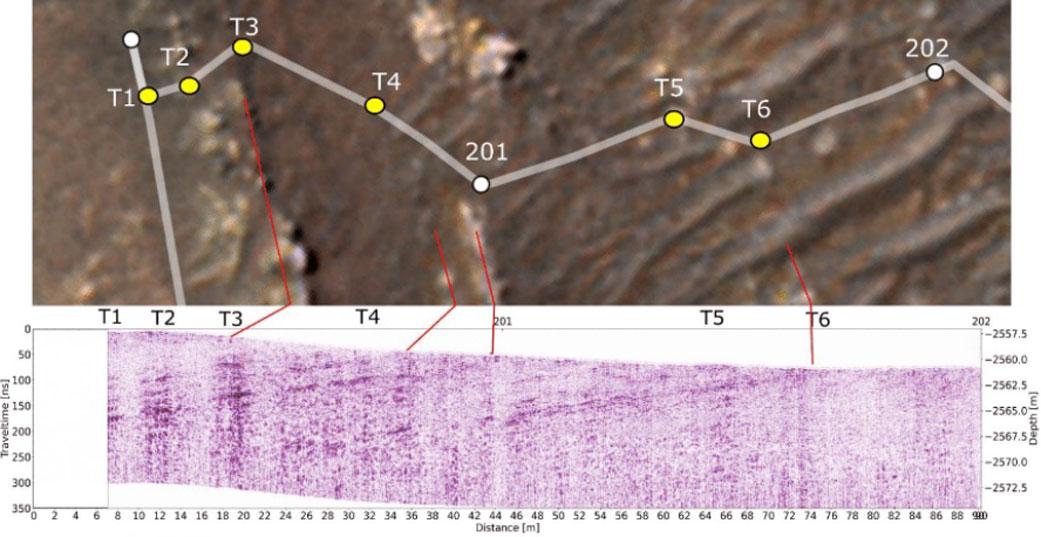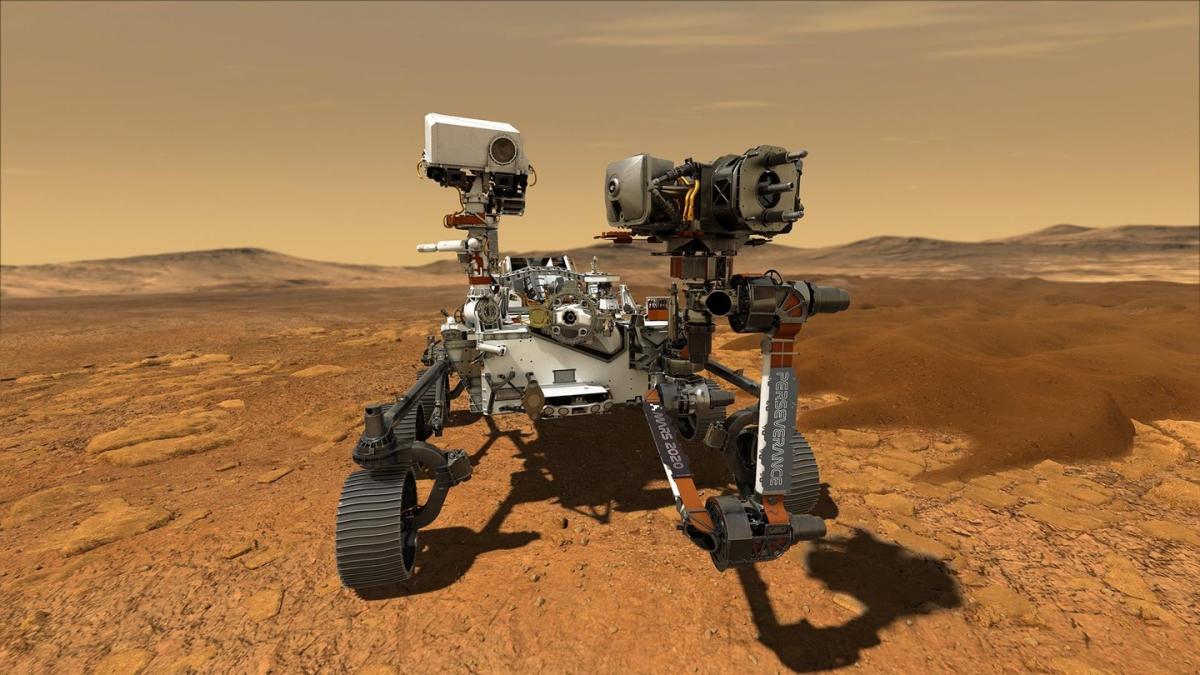Scientists with NASA's Perseverance Mars rover mission have discovered that the bedrock their six-wheeled explorer has been driving on since landing in February likely formed from red-hot magma. The discovery has implications for understanding and accurately dating critical events in the history of Jezero Crater – as well as the rest of the planet.
The team has also concluded that rocks in the crater have interacted with water multiple times over the eons and that some contain organic molecules. These and other findings were presented on Dec 15 at a news briefing by the American Geophysical Union's meeting in New Orleans.

The drill at the end of Perseverance's robotic arm can abrade, or grind, rock surfaces to allow other instruments, such as PIXL, to study them. Short for Planetary Instrument for X-ray Lithochemistry, PIXL uses X-ray fluorescence to map the elemental composition of rocks.
On Nov. 12, PIXL analyzed a South Séítah rock the science team had chosen to take a core sample from using the rover's drill. The PIXL data showed the rock, nicknamed "Brac," to be composed of an unusual abundance of large olivine crystals engulfed in pyroxene crystals.
The multi-mission Mars Sample Return campaign began with Perseverance, which is collecting Martian rock samples in search of ancient microscopic life. Of Perseverance's 43 sample tubes, six have been sealed to date. Mars Sample Return seeks to bring select tubes back to Earth to study them with powerful lab equipment.
Still to be determined is whether the olivine-rich rock formed in a thick lava lake cooling on the surface or in a subterranean chamber that was later exposed by erosion.
Organic Molecules
Also great news for Mars Sample Return is the discovery of organic compounds by the SHERLOC (Scanning Habitable Environments with Raman & Luminescence for Organics & Chemicals) instrument. The carbon-containing molecules are not only in the interiors of abraded rocks SHERLOC analyzed, but in the dust on non-abraded rock.
Confirmation of organics is not a confirmation that life once existed in Jezero and left telltale signs (biosignatures). There are both biological and non-biological mechanisms that create organics.

"Curiosity also discovered organics at its landing site within Gale Crater," said Luther Beegle, SHERLOC principal investigator at NASA's Jet Propulsion Laboratory in Southern California.
The preservation of organics inside ancient rocks – regardless of origin – at both Gale and Jezero Craters does mean that potential biosignatures (signs of life, whether past or present) could be preserved, too.
'Radargram'
Along with its rock-core sampling capabilities, Perseverance has brought the first ground-penetrating radar to the surface of Mars. RIMFAX (Radar Imager for Mars' Subsurface Experiment) creates a "radargram" of subsurface features up to about 33 feet (10 meters) deep.
The ridgeline has multiple rock formations with a visible downward tilt. With RIMFAX data, Perseverance scientists now know that these angled rock layers continue at the same angle well below the surface. The ability to observe geologic features even below the surface adds a new dimension to the team's geologic mapping capabilities at Mars.
The Mars 2020 Perseverance mission is part of NASA's Moon to Mars exploration approach, which includes Artemis missions to the Moon that will help prepare for human exploration of the Red Planet.
JPL, which is managed for NASA by Caltech in Pasadena, California, built and manages operations of the Perseverance rover.

















